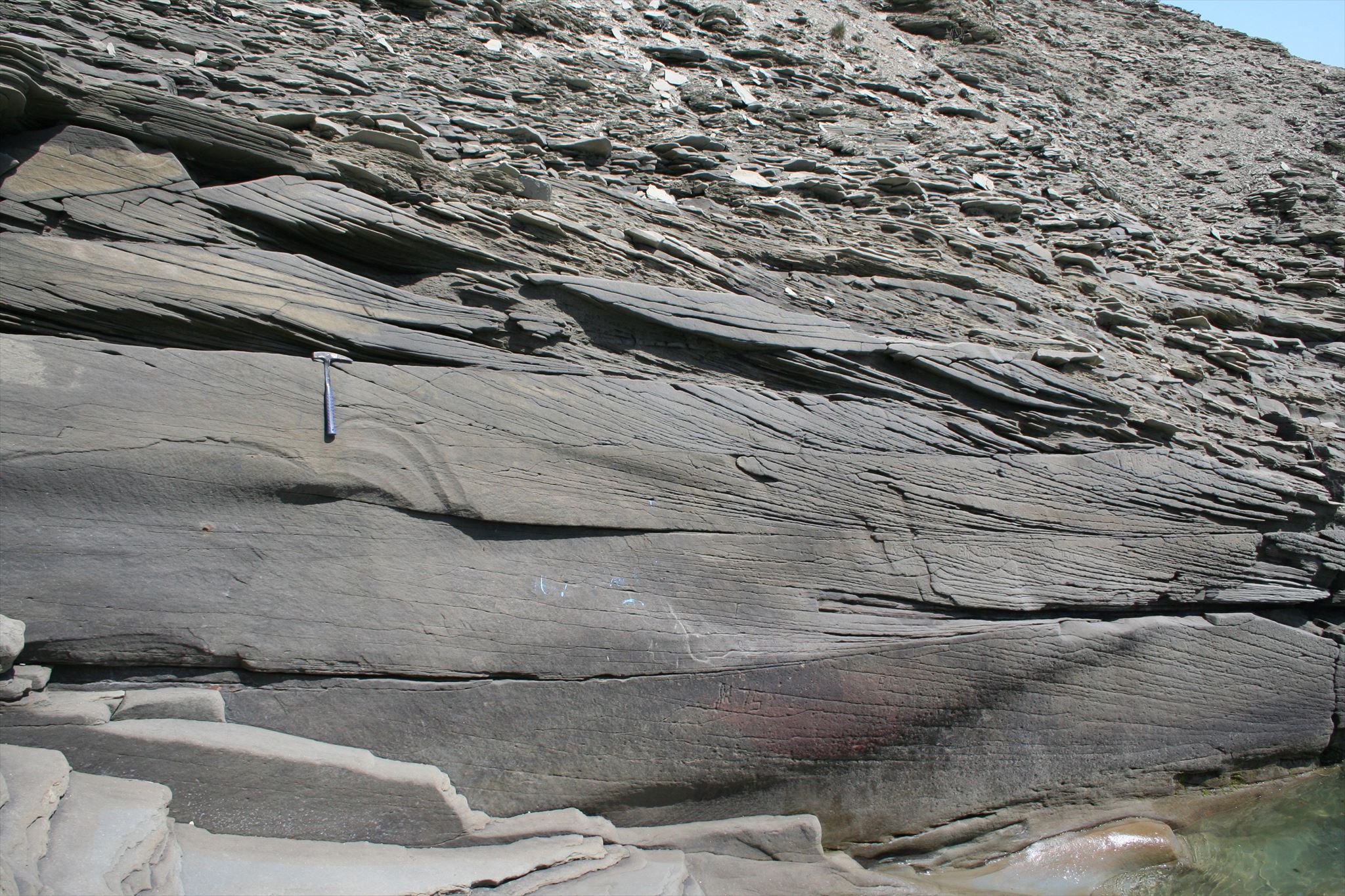Sedimentary Basins
A sedimentary basin is a depression in the Earth's crust which is usually filled with water for most of it's existence. Basins are usually fresh water bodies unless they are linked via tidal areas to the sea. Surrounding landscapes eventually deposit eroded materials into the basin. These deposits in time often form into beds due to climate, current and fauna changes which define the beds.
These soil beds then become hardened from the weight of sediment above, and become sedimentary rock. The rocks in front of you are part of the sedimentary Tertiary Kitsilano formation which was laid down roughly 30 million years ago.
Cross beds within sandstone layers
Cross beds are secondary beds which are at a different angle to the main beds. Cross bedding can help us to understand ancient water / air current direction. As the water or air current moves downstream / downwind, it picks up particles of mud or grains of sand and even gravel. If they are exposed to the full force of the current, sand grains are likely to be moved on. However, if they fall into the "lee" of the ripple, they are no longer under the influence of the main current and cut across the main bed and form cross beds.

Typical cross bedding.
To log this earthcache, please email me the answers at the time of logging. Wrong answers will be contacted. You can stand near the metal drainage grate near the face of the sandstone, out of the way of the bicycles to make your observations.
Each bed is defined by a thin line crossing the face of the outcrop. Looking at the face, answer the following questions:
1. How thick is an individual bed on the rock face and how many main beds do you count in the rock face.
2. Take a guess at the angle from horizontal that the beds are sloping (dipping) and in what direction, left or right. (Eg 0 is horizontal.)
3. Notice the gravelly cross bed that is cutting across the main bed in the lowest bed. What is the average thickness of the gravelly layer?